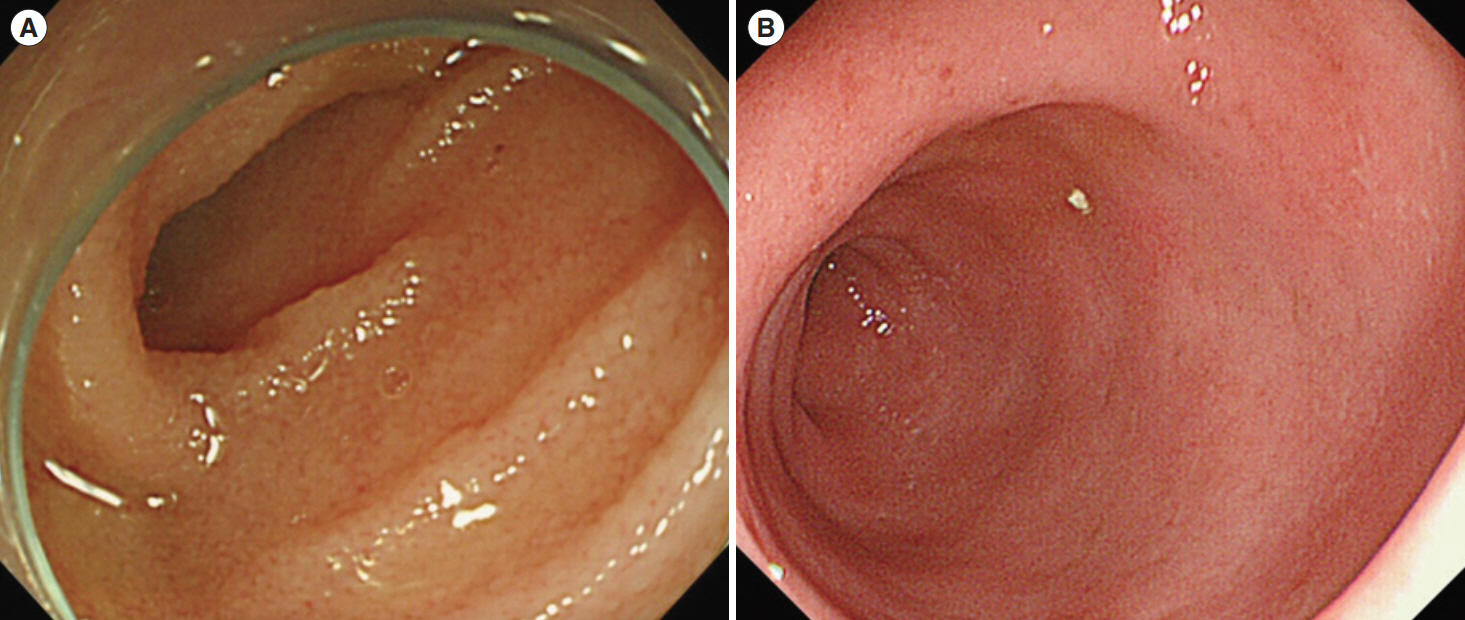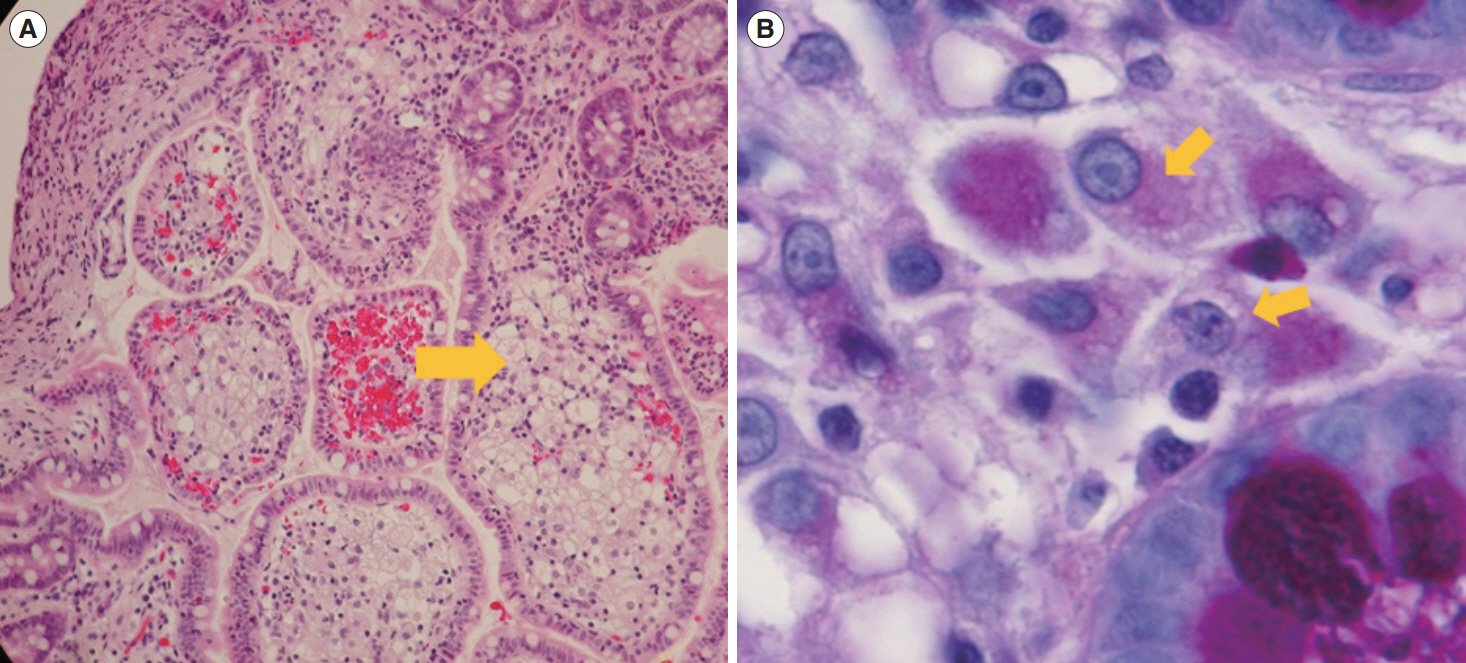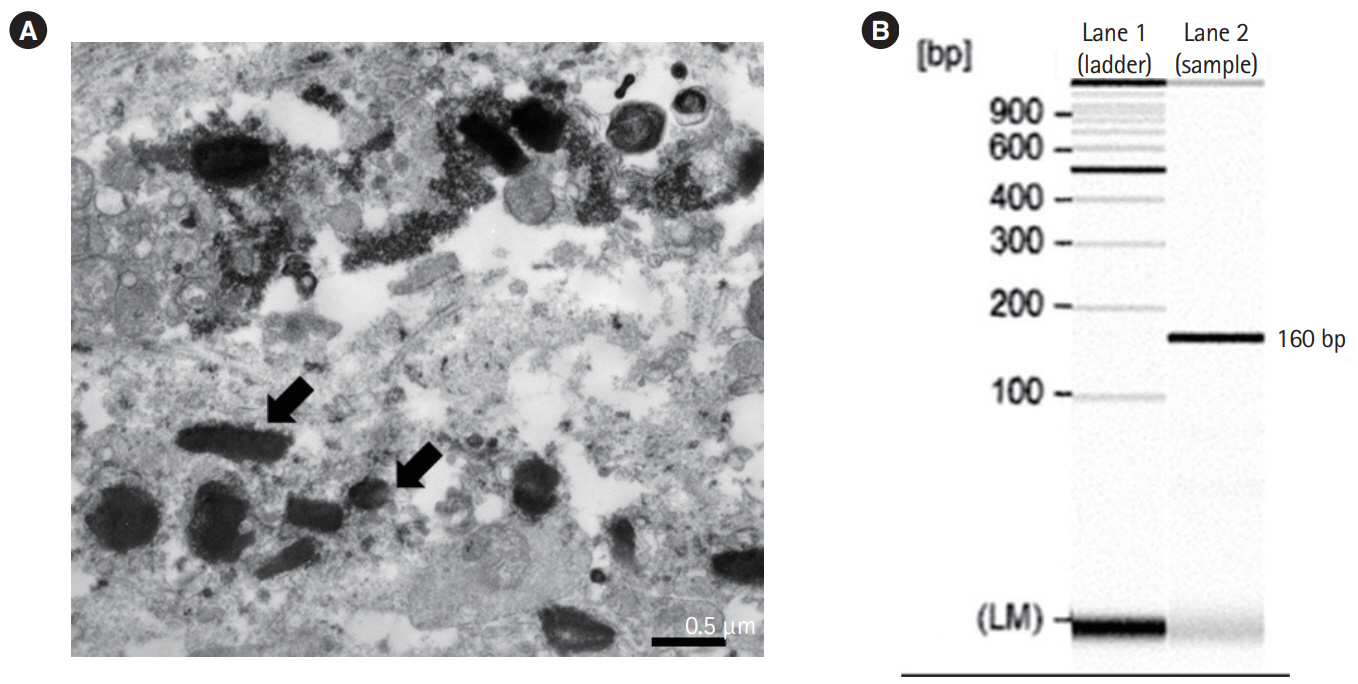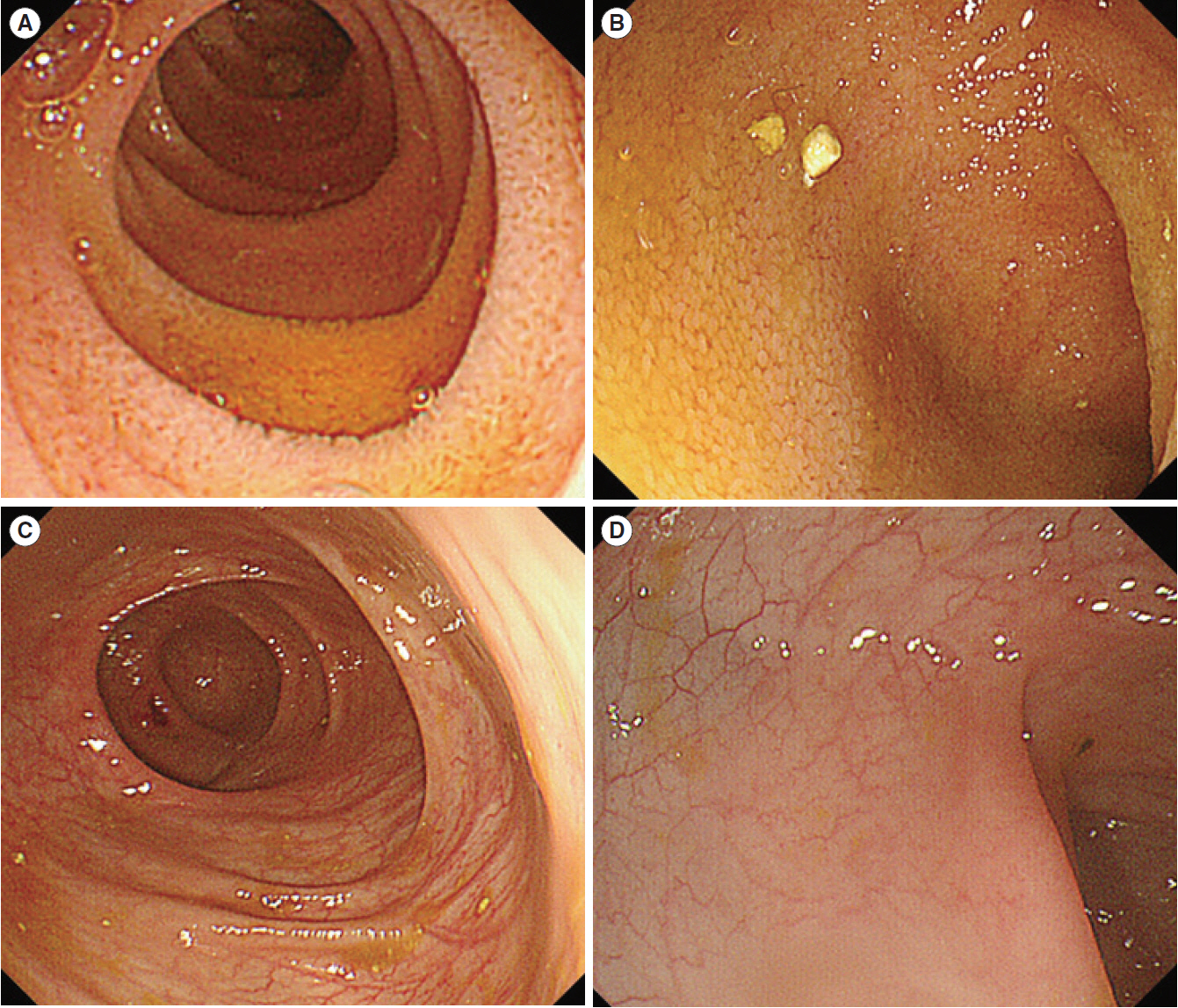Intest Res.
2021 Jan;19(1):119-125. 10.5217/ir.2019.09177.
Whipple disease mimicking inflammatory bowel disease
- Affiliations
-
- 1Department of Pediatrics, Gunma University Graduate School of Medicine, Maebashi, Japan
- 2Department of Endoscopy, University of the Ryukyus, Nishihara, Japan
- 3Clinical Department of Pathology, Gunma University Hospital, Maebashi, Japan
- 4Cell Biology Program, Inflammatory Bowel Disease Centre, The Hospital for Sick Children, Toronto, ON, Canada
- KMID: 2512108
- DOI: http://doi.org/10.5217/ir.2019.09177
Abstract
- Whipple disease is a systemic chronic infection caused by Tropheryma whipplei. Although chronic diarrhea is a common gastrointestinal symptom, diagnosis is often difficult because there are no specific endoscopic findings, and the pathogen is not detectable by stool culture. We present a female patient with Whipple disease who developed chronic bloody diarrhea and growth retardation at the age of 4 years. Colonoscopy showed a mildly edematous terminal ileum and marked erythema without vascular patterns throughout the sigmoid colon and rectum. Subsequently, a primary diagnosis of ulcerative colitis was made. Histopathological analysis of the terminal ileum showed the presence of foamy macrophages filled with periodic acidSchiff-positive particles. Polymerase chain reaction using DNA from a terminal ileum biopsy sample amplified a fragment of 16S rRNA from T. whipplei. Antibiotic treatment relieved the patient’s symptoms. There was no evidence of immunodeficiency in the present case. Since Whipple disease worsens after anti-tumor necrosis factor inhibitor therapy, considering this infection in the differential diagnosis may be important in patients with inflammatory bowel disease, especially before initiation of immunotherapy.
Keyword
Figure
Reference
-
1. Benchimol EI, Fortinsky KJ, Gozdyra P, Van den Heuvel M, Van Limbergen J, Griffiths AM. Epidemiology of pediatric inflammatory bowel disease: a systematic review of international trends. Inflamm Bowel Dis. 2011; 17:423–439.
Article2. IBD Working Group of the European Society for Paediatric Gastroenterology; Hepatology and Nutrition. Inflammatory bowel disease in children and adolescents: recommendations for diagnosis: the Porto criteria. J Pediatr Gastroenterol Nutr. 2005; 41:1–7.3. Yardley JH, Hendrix TR. Combined electron and light microscopy in Whipple’s disease: demonstration of “bacillary bodies” in the intestine. Bull Johns Hopkins Hosp. 1961; 109:80–98.4. Yajima N, Wada R, Kimura S, et al. Whipple disease diagnosed with PCR using formalin-fixed paraffin-embedded specimens of the intestinal mucosa. Intern Med. 2013; 52:219–222.
Article5. Yogi T, Hokama A, Kinjo F, et al. Whipple’s disease: the first Japanese case diagnosed by electron microscopy and polymerase chain reaction. Intern Med. 2004; 43:566–570.
Article6. Relman DA, Schmidt TM, MacDermott RP, Falkow S. Identification of the uncultured bacillus of Whipple’s disease. N Engl J Med. 1992; 327:293–301.
Article7. Ramzan NN, Loftus E Jr, Burgart LJ, et al. Diagnosis and monitoring of Whipple disease by polymerase chain reaction. Ann Intern Med. 1997; 126:520–527.
Article8. Fenollar F, Puéchal X, Raoult D. Whipple’s disease. N Engl J Med. 2007; 356:55–66.
Article9. Marth T, Moos V, Müller C, Biagi F, Schneider T. Tropheryma whipplei infection and Whipple’s disease. Lancet Infect Dis. 2016; 16:e13–e22.10. Fleming JL, Wiesner RH, Shorter RG. Whipple’s disease: clinical, biochemical, and histopathologic features and assessment of treatment in 29 patients. Mayo Clin Proc. 1988; 63:539–551.
Article11. Patel SJ, Huard RC, Keller C, Foca M. Possible case of CNS Whipple’s disease in an adolescent with AIDS. J Int Assoc Physicians AIDS Care (Chic). 2008; 7:69–73.
Article12. Tan TQ, Vogel H, Tharp BR, Carrol CL, Kaplan SL. Presumed central nervous system Whipple’s disease in a child: case report. Clin Infect Dis. 1995; 20:883–889.
Article13. Duprez TP, Grandin CB, Bonnier C, et al. Whipple disease confined to the central nervous system in childhood. AJNR Am J Neuroradiol. 1996; 17:1589–1591.14. Fenollar F, Minodier P, Boutin A, et al. Tropheryma whipplei associated with diarrhoea in young children. Clin Microbiol Infect. 2016; 22:869–874.15. Günther U, Moos V, Offenmüller G, et al. Gastrointestinal diagnosis of classical Whipple disease: clinical, endoscopic, and histopathologic features in 191 patients. Medicine (Baltimore). 2015; 94:e714.16. Masselot F, Boulos A, Maurin M, Rolain JM, Raoult D. Molecular evaluation of antibiotic susceptibility: Tropheryma whipplei paradigm. Antimicrob Agents Chemother. 2003; 47:1658–1664.
Article17. Marth T. Systematic review: Whipple’s disease (Tropheryma whipplei infection) and its unmasking by tumour necrosis factor inhibitors. Aliment Pharmacol Ther. 2015; 41:709–724.
Article
- Full Text Links
- Actions
-
Cited
- CITED
-
- Close
- Share
- Similar articles
-
- Abdominal Pain over 6 Months
- The Pharmacotherapy of Inflammatory Bowel Disease in Child and Adolescence
- Inflammatory Bowel Disease in Pediatric Age
- Can vitamin D supplementation help control inflammation in inflammatory bowel disease beyond its classical role in bone health?
- The old versus the new: which do you keep in postoperative Crohn's disease?





